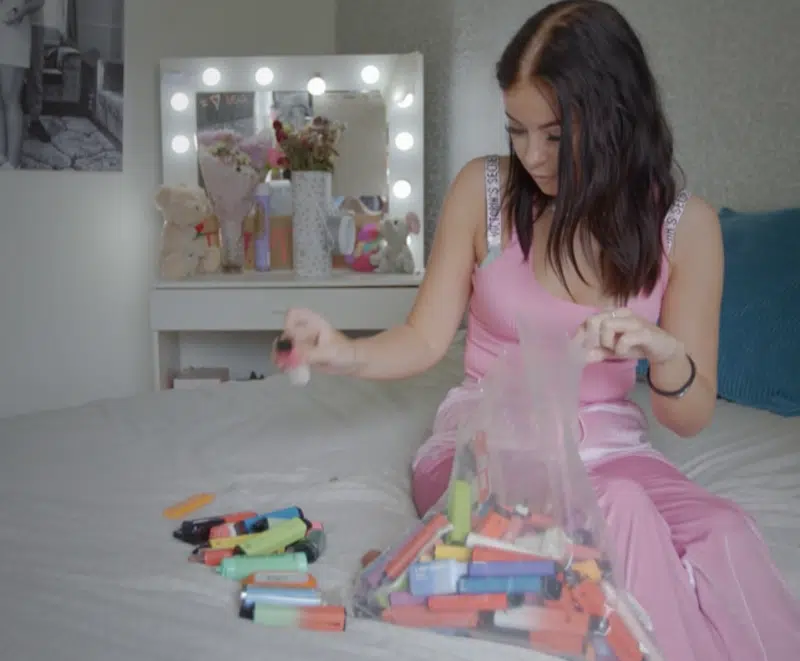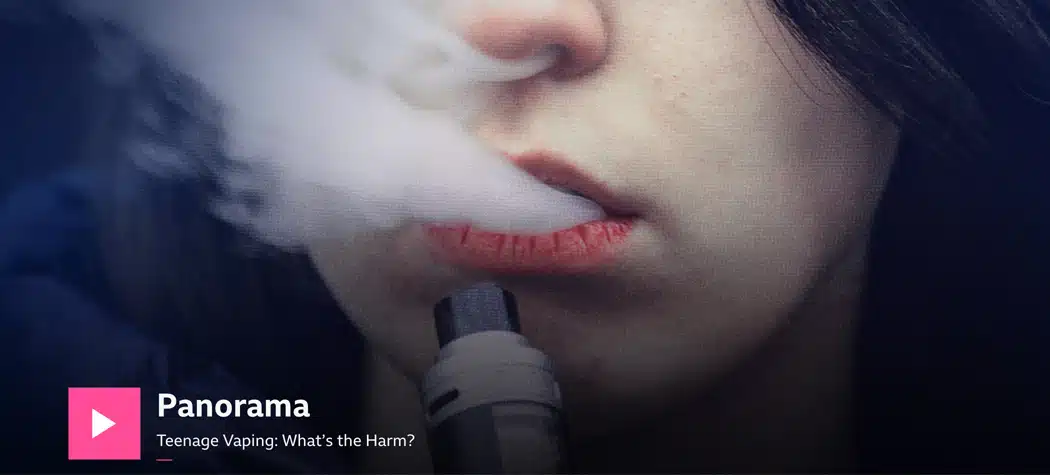Vaping News
Teenage Vaping: What’s the Harm?
Teenage Vaping: What’s the Harm? A Closer Look at the Environmental and Health Impact of Disposable Vapes
In a recent BBC episode of Panorama titled “Teenage Vaping: What’s the Harm?”, the popular investigative journalism program shed light on the concerning rise of teenage vaping and its potential harm to both the environment and children’s health. This blog post aims to delve deeper into the environmental impact of disposable vapes and the risks they pose to young users.
Teenage vaping has become a growing concern worldwide, with disposable vapes being particularly popular among this demographic. These devices, often marketed with appealing flavours and sleek designs, have gained popularity due to their convenience and discreetness. However, the consequences of this trend extend beyond the immediate health risks.

Environmental Impact of Disposable Vapes
Disposable vapes, also known as single-use vapes, contribute significantly to environmental pollution. These devices are typically made of a combination of plastic, metal, and electronic components, which are not easily recyclable. When disposed of improperly, they end up in landfills, contributing to the growing problem of electronic waste.
The batteries used in disposable vapes contain harmful chemicals such as lithium, which can leach into the soil and water, posing a threat to ecosystems and wildlife. Additionally, the production and transportation of disposable vapes contribute to carbon emissions and further exacerbate climate change.
Health Risks for Children
Disposable vapes are particularly concerning when it comes to children and teenagers. The appealing flavours and marketing tactics used by manufacturers can attract young users who may not fully understand the potential risks. Nicotine, a highly addictive substance found in many disposable vapes, can have detrimental effects on the developing brains of adolescents, leading to long-term addiction and potential health issues.
Furthermore, the lack of regulation and quality control in the production of disposable vapes raises concerns about the safety of these devices. Reports of malfunctioning batteries and explosions have been documented, posing a significant risk to users, especially children who may not be aware of proper handling and safety precautions.
Taking Action
Recognising the urgency of the situation, governments and health organisations are starting to take action to address the issue of disposable vapes. Some countries have implemented stricter regulations on the marketing and sale of these products, while others are considering bans or restrictions to protect young users and reduce environmental harm.
Education and awareness campaigns are also crucial in informing both parents and teenagers about the potential risks associated with disposable vapes. By promoting healthier alternatives and providing resources for smoking cessation, we can help young individuals make informed choices and protect their well-being.
Conclusion
The Panorama episode has shed light on the alarming rise of teenage vaping and its impact on both the environment and children’s health. Disposable vapes, in particular, pose significant risks due to their contribution to electronic waste and the potential harm caused by nicotine addiction. It is essential for governments, health organisations, and communities to work together to address this issue, implementing stricter regulations, promoting awareness, and providing support for those affected. By taking action now, we can protect our planet and the well-being of future generations.
You can watch the full episode here on BBC iPlayer.
